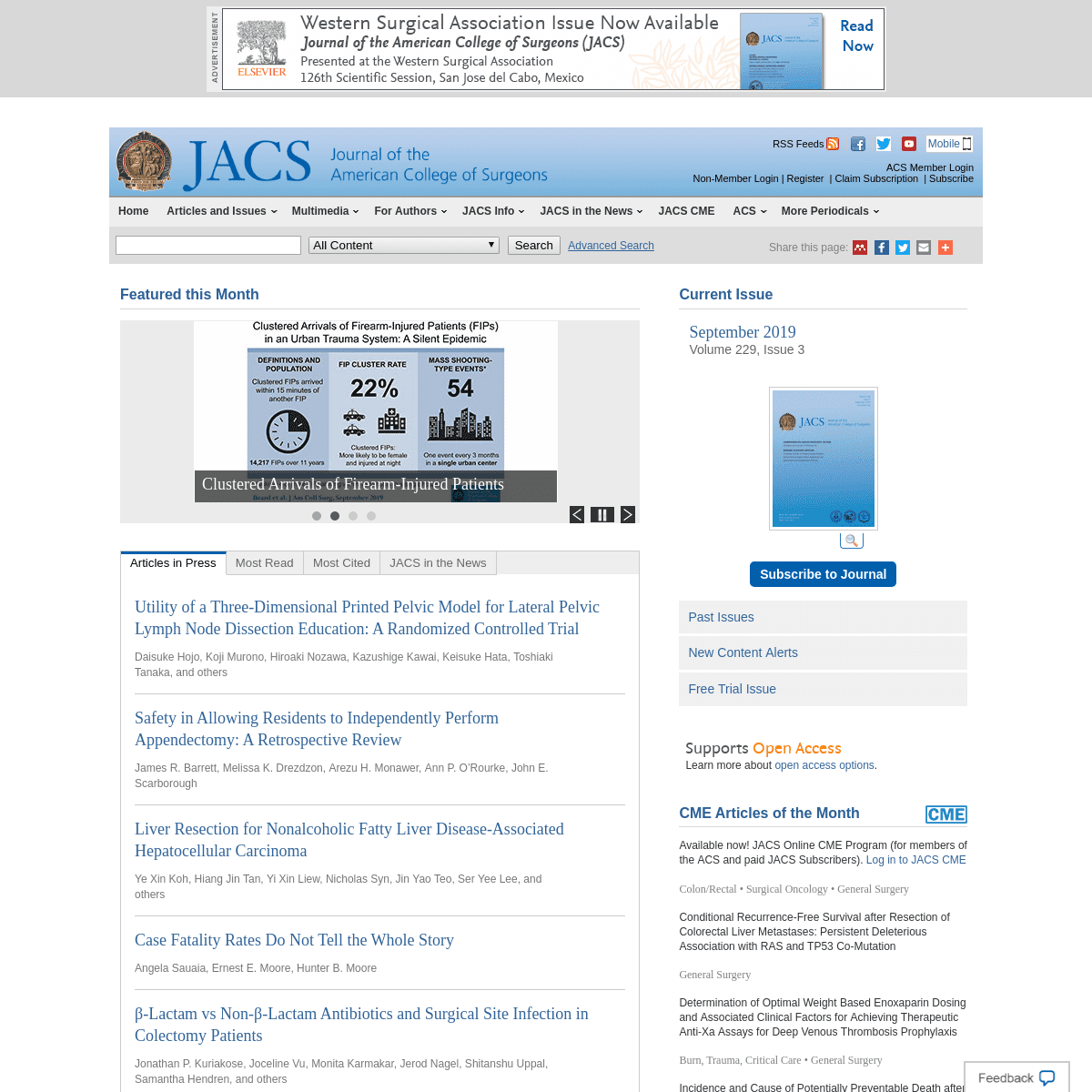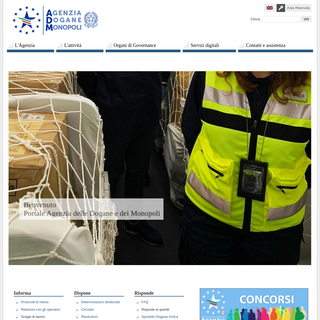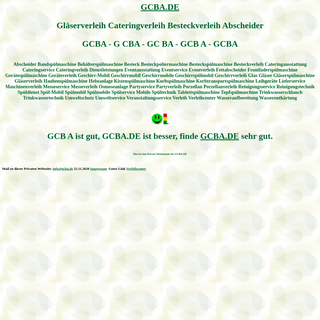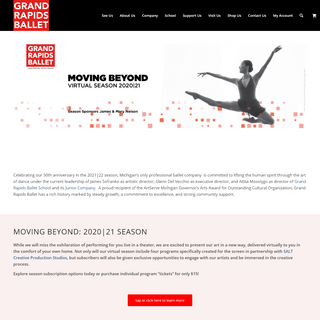Are you over 18 and want to see adult content?
More Annotations

A complete backup of mcasuspension.com
Are you over 18 and want to see adult content?
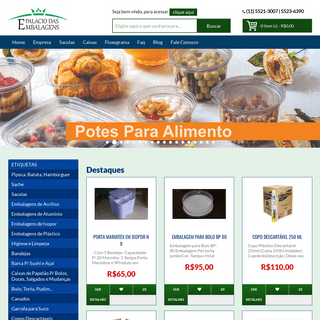
A complete backup of palaciodasembalagens.com
Are you over 18 and want to see adult content?

A complete backup of painforchange.fr
Are you over 18 and want to see adult content?
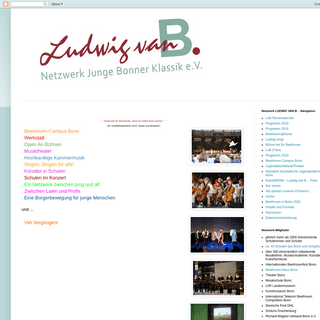
A complete backup of ludwig-van-b.blogspot.com
Are you over 18 and want to see adult content?

A complete backup of iphone-support.jp
Are you over 18 and want to see adult content?
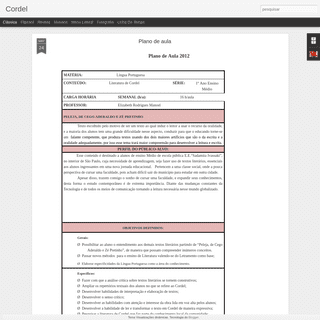
A complete backup of literaturadecordelsma.blogspot.com
Are you over 18 and want to see adult content?
Favourite Annotations

A complete backup of powerbyproxi.com
Are you over 18 and want to see adult content?

A complete backup of riponadvance.com
Are you over 18 and want to see adult content?
Text
relevance.
LIST OF ISSUES: JOURNAL OF THE AMERICAN COLLEGE OF SURGEONS December 2020 Issue 6, p613-790, e11-e14. November 2020 Issue 5, p501-612, e1-e10. October 2020 Supplement 2 Issue 4, e1-e270. October 2020 Supplement 1 Issue 4, S1-S362. October 2020 Issue 4, p413-500. September 2020 Issue 3, p309-412. August 2020 Issue 2, p193-308. July 2020 Issue 1, p1-192. MEDICALLY NECESSARY, TIME-SENSITIVE PROCEDURES: SCORING Hospitals have severely curtailed the performance of nonurgent surgical procedures in anticipation of the need to redeploy healthcare resources to meet the projected massive medical needs of patients with coronavirus disease 2019 (COVID-19). Surgical treatment of non-COVID-19 related disease during this period, however, still remains necessary. The decision to proceed with medically ETHICS IN THE TIME OF CORONAVIRUS: RECOMMENDATIONS IN THE Ethics in the Time of Coronavirus: Recommendations in the COVID-19 Pandemic Jessica B Kramer, MD, Douglas E Brown, PhD, Piroska K Kopar, MD “When I entered this profession, I did it because it was PRECAUTIONS FOR OPERATING ROOM TEAM MEMBERS DURING THE Precautions for Operating Room Team Members During the COVID-19 Pandemic Joseph D Forrester, MD, MSc, Aussama K Nassar, MD, MSc, FACS, Paul M Maggio, MD, MBA, FACS, Mary T Hawn, MD, FACS BACKGROUND: The novel coronavirus SARS-CoV-2 (COVID-19) can infect healthcare workers. We developed an institutional algorithm to protect operating room teammembers during the
SYSTEMATIC REVIEW AND META–ANALYSIS OF THE ASSOCIATION It is increasingly recognized that non-opioid analgesia is an important analgesia in the perioperative period. Specifically, NSAIDs (nonsteroidal anti-inflammatory drugs) have been touted as an adjunct, or even replacement, for opioids. However, uptake of NSAIDs has been slow due to concern for side effects, including bleeding. We sought to understand the risk of bleeding caused by NSAIDs in AMERICAN COLLEGE OF SURGEONS' GUIDELINES FOR THE The aging of the population, along with advances in the treatment of chronic medical conditions, has increased the medical complexity of the average surgical patient. Currently, approximately 1 in 10 surgical patients is prescribed chronic anticoagulation.1 In addition, dual agent antiplatelet therapy is commonly used for the secondary prevention of myocardial infarction and stent thrombosis PICC VS MIDLINES: COMPARISON OF PERIPHERALLY INSERTED To decrease the complications related to central catheters there has been an increasing utilization of peripherally inserted central catheters and ultrasound-guided long peripheral intravenous catheters (ie Midlines). While the complications of peripherally inserted central venous catheters are well described, there is less reported data on complications related to midline catheters. ASSOCIATION OF PREHOSPITAL STEP 1 VITAL SIGN CRITERIA AND RESULTS Application of our inclusion/exclusion criteria to the dataset resulted in 333,213 patients for analysis (Fig. 1). White/Caucasian patients comprised 71.2% and Black/ CEDAR: CAROLINAS EQUATION FOR DETERMINING ASSOCIATED RISKS Surgical site infections (SSI) in ventral hernia repair (VHR) are common and costly. The cost continues well beyond the initial hospitalization. The chance of SSI may be predictable by preoperative risk factors and, therefore, somewhat preventable. HOME PAGE: JOURNAL OF THE AMERICAN COLLEGE OF SURGEONSHOMEARTICLES IN PRESSCURRENT ISSUELIST OF ISSUESSUPPLEMENTSOPERATIVE STANDARDS About Us. Journal of the American College of Surgeons the official scientific journal of the American College of Surgeons, is a monthly peer-reviewed journal publishing original contributions on all aspects of surgery. Contributions include original clinical studies, review articles, and experimental investigations with clear clinicalrelevance.
LIST OF ISSUES: JOURNAL OF THE AMERICAN COLLEGE OF SURGEONS December 2020 Issue 6, p613-790, e11-e14. November 2020 Issue 5, p501-612, e1-e10. October 2020 Supplement 2 Issue 4, e1-e270. October 2020 Supplement 1 Issue 4, S1-S362. October 2020 Issue 4, p413-500. September 2020 Issue 3, p309-412. August 2020 Issue 2, p193-308. July 2020 Issue 1, p1-192. MEDICALLY NECESSARY, TIME-SENSITIVE PROCEDURES: SCORING Hospitals have severely curtailed the performance of nonurgent surgical procedures in anticipation of the need to redeploy healthcare resources to meet the projected massive medical needs of patients with coronavirus disease 2019 (COVID-19). Surgical treatment of non-COVID-19 related disease during this period, however, still remains necessary. The decision to proceed with medically ETHICS IN THE TIME OF CORONAVIRUS: RECOMMENDATIONS IN THE Ethics in the Time of Coronavirus: Recommendations in the COVID-19 Pandemic Jessica B Kramer, MD, Douglas E Brown, PhD, Piroska K Kopar, MD “When I entered this profession, I did it because it was PRECAUTIONS FOR OPERATING ROOM TEAM MEMBERS DURING THE Precautions for Operating Room Team Members During the COVID-19 Pandemic Joseph D Forrester, MD, MSc, Aussama K Nassar, MD, MSc, FACS, Paul M Maggio, MD, MBA, FACS, Mary T Hawn, MD, FACS BACKGROUND: The novel coronavirus SARS-CoV-2 (COVID-19) can infect healthcare workers. We developed an institutional algorithm to protect operating room teammembers during the
SYSTEMATIC REVIEW AND META–ANALYSIS OF THE ASSOCIATION It is increasingly recognized that non-opioid analgesia is an important analgesia in the perioperative period. Specifically, NSAIDs (nonsteroidal anti-inflammatory drugs) have been touted as an adjunct, or even replacement, for opioids. However, uptake of NSAIDs has been slow due to concern for side effects, including bleeding. We sought to understand the risk of bleeding caused by NSAIDs in AMERICAN COLLEGE OF SURGEONS' GUIDELINES FOR THE The aging of the population, along with advances in the treatment of chronic medical conditions, has increased the medical complexity of the average surgical patient. Currently, approximately 1 in 10 surgical patients is prescribed chronic anticoagulation.1 In addition, dual agent antiplatelet therapy is commonly used for the secondary prevention of myocardial infarction and stent thrombosis PICC VS MIDLINES: COMPARISON OF PERIPHERALLY INSERTED To decrease the complications related to central catheters there has been an increasing utilization of peripherally inserted central catheters and ultrasound-guided long peripheral intravenous catheters (ie Midlines). While the complications of peripherally inserted central venous catheters are well described, there is less reported data on complications related to midline catheters. ASSOCIATION OF PREHOSPITAL STEP 1 VITAL SIGN CRITERIA AND RESULTS Application of our inclusion/exclusion criteria to the dataset resulted in 333,213 patients for analysis (Fig. 1). White/Caucasian patients comprised 71.2% and Black/ CEDAR: CAROLINAS EQUATION FOR DETERMINING ASSOCIATED RISKS Surgical site infections (SSI) in ventral hernia repair (VHR) are common and costly. The cost continues well beyond the initial hospitalization. The chance of SSI may be predictable by preoperative risk factors and, therefore, somewhat preventable. LIST OF ISSUES: JOURNAL OF THE AMERICAN COLLEGE OF SURGEONS December 2020 Issue 6, p613-790, e11-e14. November 2020 Issue 5, p501-612, e1-e10. October 2020 Supplement 2 Issue 4, e1-e270. October 2020 Supplement 1 Issue 4, S1-S362. October 2020 Issue 4, p413-500. September 2020 Issue 3, p309-412. August 2020 Issue 2, p193-308. July 2020 Issue 1, p1-192. CURRENT ISSUE TABLE OF CONTENTS: JOURNAL OF THE AMERICAN Current Issue Table of Contents: Journal of the American College of Surgeons. Volume 232 Issue 6 p807-1024. Current Issue. Articles in Press. Archive. Archive. Close. New England Surgical Society Presidential Address. New England Surgical Society Articles. MAINTAINING EQUITY AND ACCESS: SUCCESSFUL IMPLEMENTATION Maintaining access to kidney transplantation during a pandemic is a challenge, particularly for centers that serve a large rural and minority patient population with an additional burden of travel. The aim of this article was to describe our experience with the rollout and use of a virtual pretransplantation evaluation platform to facilitate ongoing transplant waitlisting during the early peak AMERICAN COLLEGE OF SURGEONS' GUIDELINES FOR THE The aging of the population, along with advances in the treatment of chronic medical conditions, has increased the medical complexity of the average surgical patient. Currently, approximately 1 in 10 surgical patients is prescribed chronic anticoagulation.1 In addition, dual agent antiplatelet therapy is commonly used for the secondary prevention of myocardial infarction and stent thrombosis MEDICALLY NECESSARY, TIME-SENSITIVE PROCEDURES: SCORING Medically Necessary, Time-Sensitive Procedures: Scoring System to Ethically and Efficiently Manage Resource Scarcity and Provider Risk During the COVID-19 Pandemic SWIM FLAP: SKIN-SPARING, WISE PATTERN, INTERNAL MAMMARY The Goldilocks reconstruction, created by Heather Richardson and Grace Ma in 2013,1 offered a new method of closure after modified radical mastectomy that gives the appearance of a breast, but with no nipple. This technique also allowed for the mastectomy closure lines to be placed in an esthetic location, and had a similar complication rate tomastectomy alone.
EFFECTIVE SURGICAL SAFETY CHECKLIST IMPLEMENTATION the real world impact of surgical safety checklists on patient outcomes is likely to vary with the effectiveness of each hospital's implementation process. Deploying a checklist without building an appreciation for how and why it works ignores the critical sociocultural dimension of FINDING THE MOST FAVORABLE TIMING FOR CHOLECYSTECTOMY Early cholecystectomy (E-CCY; 8 weeks or less) after percutaneous cholecystostomy tube (PCT) placement has been associated with increased postoperative complications, but this finding has not been validated at a national level and PCT-related complications and GUIDELINES FOR PATIENT-CENTERED OPIOID PRESCRIBING AND To optimize responsible opioid prescribing after inpatient operation, we implemented a clinical trial with the following objectives: prospectively validate patient-centered opioid prescription guidelines and increase the FDA-compliant disposal rate of leftover opioid pills to higher than currently reported rates of 20% to 30%. DEVELOPMENT AND EVALUATION OF THE UNIVERSAL ACS NSQIP Accurately estimating surgical risks is critical for shared decision making and informed consent. The Centers for Medicare and Medicaid Services may soon put forth a measure requiring surgeons to provide patients with patient-specific, empirically derived estimates of postoperative complications. Our objectives were to develop a universal surgical risk estimation tool, to compare HOME PAGE: JOURNAL OF THE AMERICAN COLLEGE OF SURGEONSHOMEARTICLES IN PRESSCURRENT ISSUELIST OF ISSUESSUPPLEMENTSOPERATIVE STANDARDS About Us. Journal of the American College of Surgeons the official scientific journal of the American College of Surgeons, is a monthly peer-reviewed journal publishing original contributions on all aspects of surgery. Contributions include original clinical studies, review articles, and experimental investigations with clear clinicalrelevance.
LIST OF ISSUES: JOURNAL OF THE AMERICAN COLLEGE OF SURGEONS December 2020 Issue 6, p613-790, e11-e14. November 2020 Issue 5, p501-612, e1-e10. October 2020 Supplement 2 Issue 4, e1-e270. October 2020 Supplement 1 Issue 4, S1-S362. October 2020 Issue 4, p413-500. September 2020 Issue 3, p309-412. August 2020 Issue 2, p193-308. July 2020 Issue 1, p1-192. CURRENT ISSUE TABLE OF CONTENTS: JOURNAL OF THE AMERICAN Current Issue Table of Contents: Journal of the American College of Surgeons. Volume 232 Issue 6 p807-1024. Current Issue. Articles in Press. Archive. Archive. Close. New England Surgical Society Presidential Address. New England Surgical Society Articles. AMERICAN COLLEGE OF SURGEONS AND SURGICAL INFECTION Guidelines for the prevention, detection, and management of surgical site infections (SSI) have been published previously.1-3 This document is intended to update earlier guidelines based on the current literature and to provide a concise summary of relevant topics. SYSTEMATIC REVIEW AND META–ANALYSIS OF THE ASSOCIATION1 It is increasingly recognized that non-opioid analgesia is an important analgesia in the perioperative period. Specifically, NSAIDs (nonsteroidal anti-inflammatory drugs) have been touted as an adjunct, or even replacement, for opioids. However, uptake of NSAIDs has been slow due to concern for side effects, including bleeding. We sought to understand the risk of bleeding caused by NSAIDs in MOST COMMON PEDIATRIC OPERATIONS ARE PERFORMED BY GENERAL Pediatric surgical workforce studies generally focus on surgeon density. Fewer studies examine the training of surgeons performing pediatric operations. This study aims to define the clinical practice of pediatric surgeons (PS) and general surgeons (GS). IMPACT OF LOW DOSE MALTODEXTRIN/CITRULLINE LOADING ON THE Postoperative hyperglycemia after cardiac surgery increases complications; however, there are no data regarding the duration of stress-induced hyperglycemia nor the impact of carbohydrate loading in cardiac surgery patients. Prior work in colorectal and bariatric surgery has shown a significant reduction in glycemic events with the use of a low dose maltodextrin and citrulline loading strategy. COMMITTED TO BETTER: REDUCING INFECTION AFTER SURGERY A provincial campaign to decrease postoperative infection was launched in 2017 across Ontario hospitals that participated in the provincial NSQIP collaborative. The 1-year campaign resulted in clinically significant reduction in the rate of surgical site infection and urinary tract infection and a trend for decreased pneumonia incidence among participating hospitals. PICC VS MIDLINES: COMPARISON OF PERIPHERALLY INSERTED To decrease the complications related to central catheters there has been an increasing utilization of peripherally inserted central catheters and ultrasound-guided long peripheral intravenous catheters (ie Midlines). While the complications of peripherally inserted central venous catheters are well described, there is less reported data on complications related to midline catheters. CEDAR: CAROLINAS EQUATION FOR DETERMINING ASSOCIATED RISKS Surgical site infections (SSI) in ventral hernia repair (VHR) are common and costly. The cost continues well beyond the initial hospitalization. The chance of SSI may be predictable by preoperative risk factors and, therefore, somewhat preventable. HOME PAGE: JOURNAL OF THE AMERICAN COLLEGE OF SURGEONSHOMEARTICLES IN PRESSCURRENT ISSUELIST OF ISSUESSUPPLEMENTSOPERATIVE STANDARDS About Us. Journal of the American College of Surgeons the official scientific journal of the American College of Surgeons, is a monthly peer-reviewed journal publishing original contributions on all aspects of surgery. Contributions include original clinical studies, review articles, and experimental investigations with clear clinicalrelevance.
LIST OF ISSUES: JOURNAL OF THE AMERICAN COLLEGE OF SURGEONS December 2020 Issue 6, p613-790, e11-e14. November 2020 Issue 5, p501-612, e1-e10. October 2020 Supplement 2 Issue 4, e1-e270. October 2020 Supplement 1 Issue 4, S1-S362. October 2020 Issue 4, p413-500. September 2020 Issue 3, p309-412. August 2020 Issue 2, p193-308. July 2020 Issue 1, p1-192. CURRENT ISSUE TABLE OF CONTENTS: JOURNAL OF THE AMERICAN Current Issue Table of Contents: Journal of the American College of Surgeons. Volume 232 Issue 6 p807-1024. Current Issue. Articles in Press. Archive. Archive. Close. New England Surgical Society Presidential Address. New England Surgical Society Articles. AMERICAN COLLEGE OF SURGEONS AND SURGICAL INFECTION Guidelines for the prevention, detection, and management of surgical site infections (SSI) have been published previously.1-3 This document is intended to update earlier guidelines based on the current literature and to provide a concise summary of relevant topics. SYSTEMATIC REVIEW AND META–ANALYSIS OF THE ASSOCIATION1 It is increasingly recognized that non-opioid analgesia is an important analgesia in the perioperative period. Specifically, NSAIDs (nonsteroidal anti-inflammatory drugs) have been touted as an adjunct, or even replacement, for opioids. However, uptake of NSAIDs has been slow due to concern for side effects, including bleeding. We sought to understand the risk of bleeding caused by NSAIDs in MOST COMMON PEDIATRIC OPERATIONS ARE PERFORMED BY GENERAL Pediatric surgical workforce studies generally focus on surgeon density. Fewer studies examine the training of surgeons performing pediatric operations. This study aims to define the clinical practice of pediatric surgeons (PS) and general surgeons (GS). IMPACT OF LOW DOSE MALTODEXTRIN/CITRULLINE LOADING ON THE Postoperative hyperglycemia after cardiac surgery increases complications; however, there are no data regarding the duration of stress-induced hyperglycemia nor the impact of carbohydrate loading in cardiac surgery patients. Prior work in colorectal and bariatric surgery has shown a significant reduction in glycemic events with the use of a low dose maltodextrin and citrulline loading strategy. COMMITTED TO BETTER: REDUCING INFECTION AFTER SURGERY A provincial campaign to decrease postoperative infection was launched in 2017 across Ontario hospitals that participated in the provincial NSQIP collaborative. The 1-year campaign resulted in clinically significant reduction in the rate of surgical site infection and urinary tract infection and a trend for decreased pneumonia incidence among participating hospitals. PICC VS MIDLINES: COMPARISON OF PERIPHERALLY INSERTED To decrease the complications related to central catheters there has been an increasing utilization of peripherally inserted central catheters and ultrasound-guided long peripheral intravenous catheters (ie Midlines). While the complications of peripherally inserted central venous catheters are well described, there is less reported data on complications related to midline catheters. CEDAR: CAROLINAS EQUATION FOR DETERMINING ASSOCIATED RISKS Surgical site infections (SSI) in ventral hernia repair (VHR) are common and costly. The cost continues well beyond the initial hospitalization. The chance of SSI may be predictable by preoperative risk factors and, therefore, somewhat preventable. MOST COMMON PEDIATRIC OPERATIONS ARE PERFORMED BY GENERAL Pediatric surgical workforce studies generally focus on surgeon density. Fewer studies examine the training of surgeons performing pediatric operations. This study aims to define the clinical practice of pediatric surgeons (PS) and general surgeons (GS). ETHICS IN THE TIME OF CORONAVIRUS: RECOMMENDATIONS IN THE Ethics in the Time of Coronavirus: Recommendations in the COVID-19 Pandemic Jessica B Kramer, MD, Douglas E Brown, PhD, Piroska K Kopar, MD “When I entered this profession, I did it because it was PRECAUTIONS FOR OPERATING ROOM TEAM MEMBERS DURING THE Precautions for Operating Room Team Members During the COVID-19 Pandemic Joseph D Forrester, MD, MSc, Aussama K Nassar, MD, MSc, FACS, Paul M Maggio, MD, MBA, FACS, Mary T Hawn, MD, FACS BACKGROUND: The novel coronavirus SARS-CoV-2 (COVID-19) can infect healthcare workers. We developed an institutional algorithm to protect operating room teammembers during the
AMERICAN COLLEGE OF SURGEONS' GUIDELINES FOR THE The aging of the population, along with advances in the treatment of chronic medical conditions, has increased the medical complexity of the average surgical patient. Currently, approximately 1 in 10 surgical patients is prescribed chronic anticoagulation.1 In addition, dual agent antiplatelet therapy is commonly used for the secondary prevention of myocardial infarction and stent thrombosis PICC VS MIDLINES: COMPARISON OF PERIPHERALLY INSERTED To decrease the complications related to central catheters there has been an increasing utilization of peripherally inserted central catheters and ultrasound-guided long peripheral intravenous catheters (ie Midlines). While the complications of peripherally inserted central venous catheters are well described, there is less reported data on complications related to midline catheters. EFFECTIVE SURGICAL SAFETY CHECKLIST IMPLEMENTATION the real world impact of surgical safety checklists on patient outcomes is likely to vary with the effectiveness of each hospital's implementation process. Deploying a checklist without building an appreciation for how and why it works ignores the critical sociocultural dimension of DIFFERENCES IN COMPLICATIONS AND ASSOCIATED RISK FACTORS Partial nephrectomy is now the standard of care for small renal masses. As the incidence of renal cell carcinoma continues to rise, minimally invasive techniques play an increasing role in surgical management. To better evaluate whether surgical technique results in a difference in complications, we sought to compare the two techniques and define risk factors for complications utilizing the INTRODUCTION AND HISTORICAL BACKGROUND OF PALLIATIVE CARE Box 1This is the first in a planned monthly series addressing end-of-life issues written for and by surgeons. EXTRA COSTS OF ROBOTIC SURGERY IN MINOR AND MAJOR A total of 92,835 patients (89,125 laparoscopic, 3,710 robotic) were analyzed. Laparoscopic group cost was $10,270 vs $12,430 in roboticcases (p
Details
Copyright © 2024 ArchiveBay.com. All rights reserved. Terms of Use | Privacy Policy | DMCA | 2021 | Feedback | Advertising | RSS 2.0
